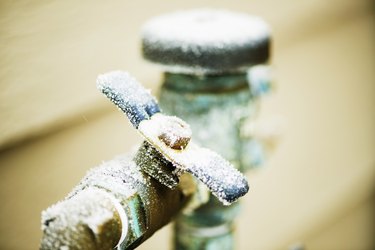The publisher is making several good pointers on the subject of Prevent Frozen Pipes overall in this post directly below.

Cold weather can wreak havoc on your pipes, especially by freezing pipes. Below's how to avoid it from taking place and what to do if it does.
Introduction
As temperatures decrease, the threat of frozen pipes boosts, potentially leading to pricey repair work and water damage. Recognizing exactly how to stop frozen pipes is critical for property owners in cool environments.
Recognizing Frozen Pipes
What causes pipelines to ice up?
Pipes freeze when subjected to temperature levels below 32 ° F (0 ° C) for prolonged durations. As water inside the pipelines ices up, it expands, putting pressure on the pipe wall surfaces and potentially triggering them to break.
Threats and problems
Icy pipelines can lead to supply of water interruptions, building damages, and pricey repair services. Ruptured pipes can flooding homes and trigger substantial architectural damage.
Indicators of Frozen Piping
Determining icy pipelines early can avoid them from rupturing.
Exactly how to determine icy pipelines
Search for lowered water circulation from faucets, uncommon odors or sounds from pipes, and noticeable frost on subjected pipes.
Avoidance Tips
Insulating prone pipes
Wrap pipelines in insulation sleeves or use warm tape to protect them from freezing temperatures. Concentrate on pipes in unheated or outside locations of the home.
Heating methods
Maintain interior areas adequately heated up, specifically locations with plumbing. Open cupboard doors to enable cozy air to distribute around pipelines under sinks.
Protecting Outdoor Plumbing
Garden pipes and outside faucets
Detach and drain yard hoses prior to winter season. Install frost-proof spigots or cover exterior faucets with insulated caps.
What to Do If Your Pipes Freeze
Immediate actions to take
If you suspect icy pipes, keep faucets open up to soothe stress as the ice thaws. Utilize a hairdryer or towels taken in warm water to thaw pipes slowly.
Long-Term Solutions
Architectural modifications
Think about rerouting pipes far from outside walls or unheated areas. Add additional insulation to attics, basements, and crawl spaces.
Updating insulation
Buy high-quality insulation for pipelines, attics, and walls. Correct insulation assists maintain constant temperatures and reduces the danger of frozen pipelines.
Final thought
Avoiding icy pipes calls for positive actions and quick feedbacks. By understanding the reasons, indications, and safety nets, property owners can secure their pipes during winter.
5 Ways to Prevent Frozen Pipes
Drain Outdoor Faucets and Disconnect Hoses
First, close the shut-off valve that controls the flow of water in the pipe to your outdoor faucet. Then, head outside to disconnect and drain your hose and open the outdoor faucet to allow the water to completely drain out of the line. Turn off the faucet when done. Finally, head back to the shut-off valve and drain the remaining water inside the pipe into a bucket or container. Additionally, if you have a home irrigation system, you should consider hiring an expert to clear the system of water each year.
Insulate Pipes
One of the best and most cost-effective methods for preventing frozen water pipes is to wrap your pipes with insulation. This is especially important for areas in your home that aren’t exposed to heat, such as an attic. We suggest using foam sleeves, which can typically be found at your local hardware store.
Keep Heat Running at 65
Your pipes are located inside your walls, and the temperature there is much colder than the rest of the house. To prevent your pipes from freezing, The Insurance Information Institute suggests that you keep your home heated to at least 65 degrees, even when traveling. You may want to invest in smart devices that can keep an eye on the temperature in your home while you’re away.
Leave Water Dripping
Moving water — even a small trickle — can prevent ice from forming inside your pipes. When freezing temps are imminent, start a drip of water from all faucets that serve exposed pipes. Leaving a few faucets running will also help relieve pressure inside the pipes and help prevent a rupture if the water inside freezes.
Open Cupboard Doors
Warm your kitchen and bathroom pipes by opening cupboards and vanities. You should also leave your interior doors ajar to help warm air circulate evenly throughout your home.

We had been guided to that article on How To Avoid Freezing Pipes from a good friend on a different web page. Appreciated our posting? Please share it. Let others discover it. I treasure your readership.
Click Here